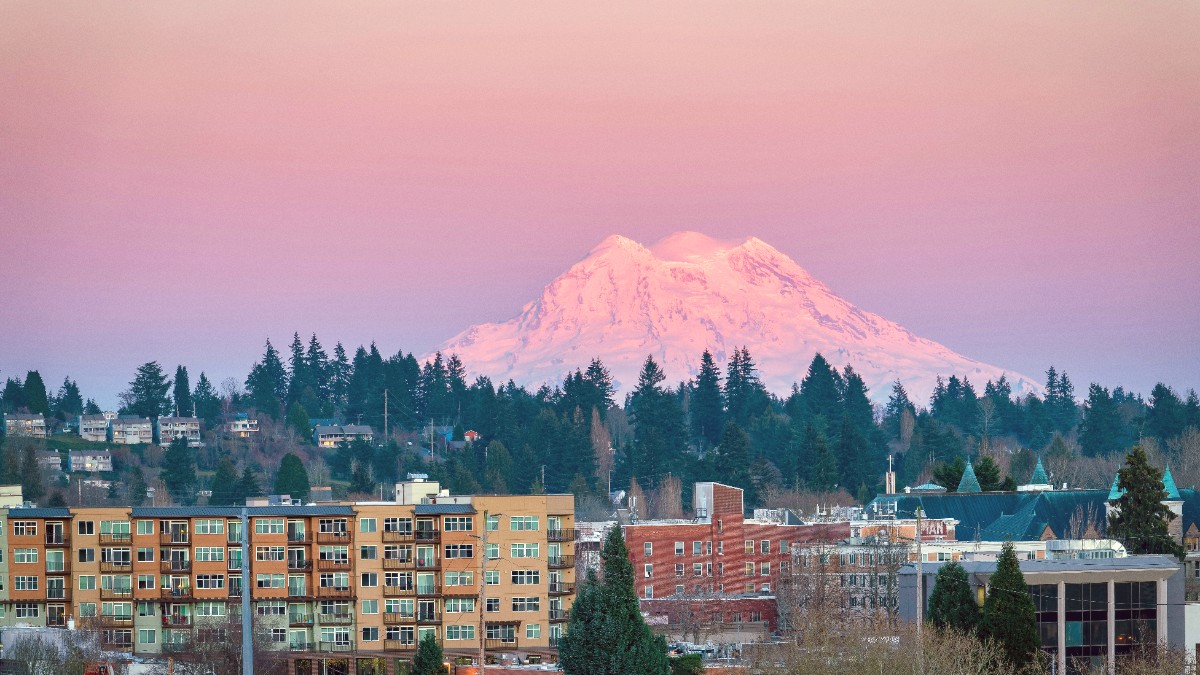
Washington, USA
Exploration awaits whether you seek historical insights, local flavors, or a connection with nature. Olympia offers a rewarding journey. Experience a city that holds Washington’s government and serves as a friendly hub for discovery.
Olympia sits at the southern end of Puget Sound, an inland sea connecting to the Pacific Ocean. This places the city approximately 60 miles (97 km) southwest of Seattle and about 30 miles (48 km) south of Tacoma. This location creates a quieter atmosphere, closely linked to its natural surroundings.
Budd Inlet, a narrow extension of Puget Sound, extends into Olympia’s heart. The inlet shapes the city's waterfront, with opportunities for boating, kayaking, and scenic walks along Percival Landing. Saltwater influences the local climate and supports a rich ecosystem.
Olympia, founded in 1850, gained significance due to its strategic location. It held the southernmost navigable point of Puget Sound, a natural hub for trade and transportation during the territorial era. This position made it a gateway for settlers moving into the Pacific Northwest.
In 1853, Olympia became the capital of the newly formed Washington Territory. This political role continued when Washington achieved statehood in 1889, establishing Olympia as the permanent state capital. Its governmental buildings, including the iconic State Capitol Building, mark this long political heritage.
City founded
Becomes Washington Territorial Capital
Logging and maritime activities grow
Washington achieves statehood; Olympia remains capital
Modern capital with preserved historical architecture
The city’s early economy relied on logging and maritime activities. Timber from surrounding forests was processed and shipped from Olympia’s port, contributing to the young territory’s growth. Its role in the Puget Sound War in the mid-1850s, a conflict between settlers and Native American tribes, also marks a challenging period.
Over the decades, Olympia grew from a bustling frontier town into a modern capital. It preserves many elements of its historical architecture and community spirit. Its past shapes its present, connecting visitors to the pioneers and politicians who built Washington.
Downtown Olympia features numerous well-preserved historic buildings. These structures now house independent shops, cafes, and restaurants, creating a visual contrast with modern developments.
Image: Old Capitol Building in Olympia
Olympia, with approximately 55,000 residents (2023 estimates), serves as Thurston County's political and cultural center. Local galleries, theaters, and public art installations contribute to a lively creative atmosphere. This artistic energy appears during events like the bi-annual Arts Walk.
The city's urban landscape blends historical architecture with natural beauty. Downtown Olympia has many historic buildings, alongside modern developments. Nature always sits nearby, with parks, waterways, and green spaces throughout the city.
Residents focus on environmental sustainability, local food systems, and community engagement, shaping city life.
Olympia acts as a base for exploring the Olympic Peninsula and Mount Rainier National Park.
Discover a dynamic downtown, local craft breweries, and an array of independent shops.
The city provides access to outdoor recreational activities, whether kayaking on Budd Inlet, hiking in nearby state parks, or visiting larger national parks. It also serves as a comfortable departure point for journeys to the Olympic Peninsula and Mount Rainier National Park.